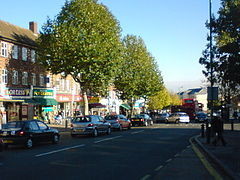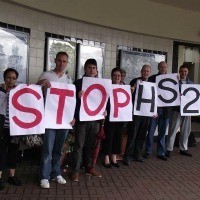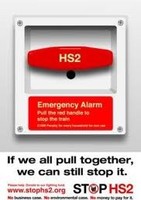Greenford
Greenford's main landmarks are the small Parish Church of Holy Cross (14th century); and Betham House, built by Edward Betham (c. 1780). The Greenford post town covers a very large area.
The name is first recorded in 848 as Grenan forda. It is formed from the Old English 'grēne' and 'ford' and means 'place at the green ford'. Greenford was known as Great Greenford in order to distinguish it from Little Greenford, which is now known as Perivale. The affixes 'Magna' and 'Parva' have also been used to denote the difference.
Recreation, Sport and Leisure
The grounds of the former Ravenor Farm has become Greenford's largest park. It is the venue for the annual Greenford Carnival, which is held every July.
Until 1910, the land that formed Ravenor Farm / Ravenor Park was a detached part of Northolt parish, with the tithes to the land going to St. Mary's Church, Northolt and not the Greenford parish of Holy Cross.
Greenford has two non-League football teams London Tigers F.C. who play at the Avenue Park Stadium and North Greenford United F.C. who play at Berkeley Fields. The trotting track at Greenford was a pioneer speedway venue - the track would be called a long track now, as it was of the order of half a mile/800 metres per lap.
Places of interest
The Heritage Centre: a cornucopia of British-made domestic paraphernalia of 20th century is on display - a variety of household items that were commonly found in British homes and gardens in the past. The London Motorcycle Museum is housed in the row of converted milking sheds in front of the Heritage Centre.
Art and culture
Five hundred yards north east from William Perkin's dye factory was a triangular field in which he kept horses. On this ground was built the Oldfield Tavern public house, which became a popular venue for a rock group called the Detours, who met a drummer there called Keith Moon. On Thursday 20 February 1964 they were introduced to the audience of the Oldfield Tavern as The Who.
History
Greenford is considered to be birthplace of the modern organic chemical industry, as it was at William Perkin's chemical factory in North Greenford, by the Grand Union Canal, that the world's first aniline dye was discovered in March 1856. Perkin called his amazing discovery 'mauveine'. Today there is a blue plaque marking the spot in Oldfield Lane North, just south of the Black Horse pub. Greenford is home to the Hovis factory. The former Rockware glassworks on the canal is commemorated by Rockware Avenue. Greenford formed part of Greenford Urban District from 1894 to 1926 and was then absorbed by the Municipal Borough of Ealing.
Post World War 1, famous tea blender J. Lyons and Co. were looking for a secondary site on which to expand production beyond Cadby Hall, Hammersmith. In 1921 they bought the first piece of an eventual 63 acres (25 ha) site, due to its location close to good transport links from both the Grand Union Canal and the Great Western Railway's Great Western Main Line, and the West Coast Main Line and onwards to the Midlands at Willesden Junction.
The Lyons factory officially opened in July 1921, with the first single-storey buildings known as "Zig-Zag" due to their northern light aligned windows allowing maximum light into the production area. There were steam and electrical power plants on site, which powered both the plant as well as the staff canteen and medical facilities, accessible to all plant employees and their dependents.Transport docks and a canal basin had been developed, allowing shipment of tea and coffee directly from London Docks into HM Customs excise controlled bonded warehouses. The extensive onsite railway infrastructure allowed precise positioning of heavy raw goods into the factory, as well as the extraction of finished product. Lyons bought their own steam shunters to move wagons between the GWR exchange sidings and the factory system.
Lyons quickly became Greenford's biggest employer. A later pioneer in electronic machines and computing, Lyons deployed the latest technology, making Greenford a show place that was regularly visited by the media, academics, competitors and royalty, with more than one visit by King George V and Queen Mary. In the 1950s, the site developed the breakfast ceral Ready Brek.Areas of the site not initially developed for factory use were landscaped, with many trees planted. As the factory developed these diminished, particularly after the development of the Lyons Maid Bridge Park factory in the 1950s, and the new administration block in 1971.
After the merger of Lyons with Allied Bakeries in the 1980s, and the focus of the new Allied Domecq business to focus on spirits, with the sell off of the businesses associated with the factory, the need for the facility dwindled. Redeveloped from 1998, today it is known as Lyon Way Industrial Estate.
Notable people
Sculptor C.J. Allen (1862–1956), a figure in the New Sculpture movement, was born in Greenford
Tennis player Blanche Bingley (1863–1946), six times women's singles champion at Wimbledon, was born in Greenford
Comedian Freddie Frinton (1909–1968), who remains a household name in Germany and Scandinavia, lived in Greenford
Supermodel Jourdan Dunn was born and raised in Greenford.
Jack Good, pioneering music TV producer with links to artists including The Beatles and The Monkees, was born in Greenford
Nineteenth-century actor Charles Kean (1811–1868) grew up partly in Greenford
Singing sisters The Nolans attended the Cardinal Wiseman School in Greenford
Drummer Doug Sandom, Keith Moon's predecessor in rock band The Who, lives in Greenford
Lieutenant General Sir William Thornton (1779–1840), a leader of the Light Brigade, lived in Greenford







